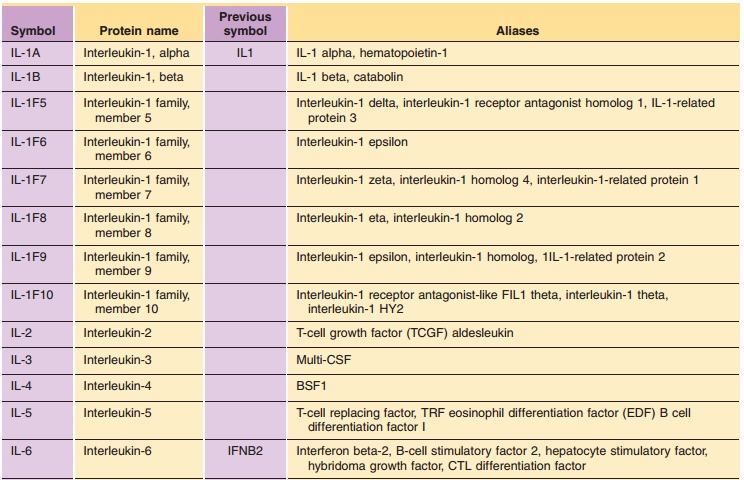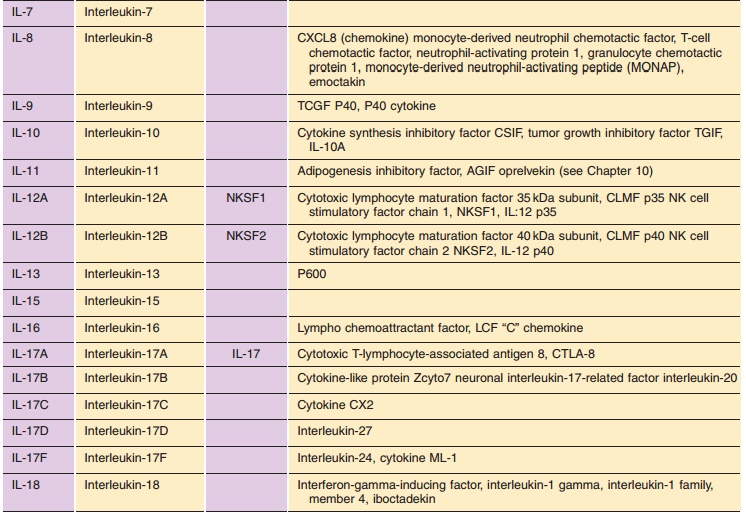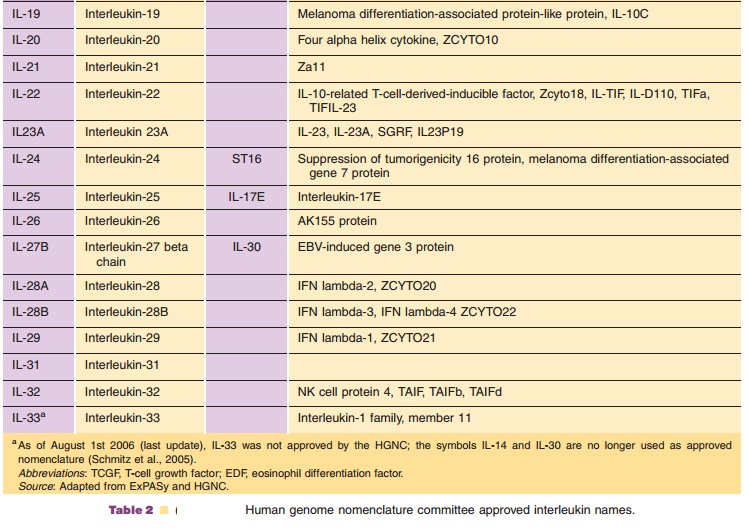Chapter: Pharmaceutical Biotechnology: Fundamentals and Applications : Interferons and Interleukins
Interferons and Interleukins
INTRODUCTION
In 1957 a substance was described (Isaacs and Lindenmann, 1957) that was
produced by virus-infected cell cultures and “interfered” with infection by
other viruses; it was called interferon (IFN). Over the following decades it
was realized that “IFN” comprises a family of related proteins with several
additional properties. Starting in the 1960s various “factors” produced
primarily by white blood cells (WBC) as well as other cell supernatants were
described which acted in various ways on other WBCs or somatic cells. They were
usually given a descriptive name either associated with their cell of origin or
their activity on other cells resulting in a myriad of names. The application
of molecular technology allowed us to determine that some cyto-kines had
multiple activities and that different cyto-kines had similar overlapping
activities. A systematicclassification based on genetic structure and protein
characterization has been effective. The interactive networks and cascades of
cytokines, IFN, interleukins (IL), growth factors (GF), chemokines (CK), their
receptors (r or R) and signaling pathways are highly complex and will be
further explored in this chapter.
Cytokine is a term coined in 1974 by Stanley Cohenin an attempt at a more
systematic approach to the numerous regulatory proteins secreted by hemopoietic
and nonhemopoietic cells. Cytokines play a critical role in modulating the
innate and adaptive immune systems. They are multifunctional peptides that are
now known to be produced by normal and neoplastic cells, apart from those of
the immune system. These local messengers and signaling molecules are involved
in the development of the immune system, cell growth and differentiation,
repair mechanisms and the inflam-matory cascade. Functionally, immunological
cyto-kines can be classified as T-helper cells type 1 (Th1; proinflammatory),
e.g., IL-2, IL-12, IL-18, IFNγ, or type 2 (Th2; anti-inflammatory) stimulating,
e.g., IL-4, IL-10, IL-13, TGF-b. Cytokines include:
a) IFNs: Proteins produced by eukaryotic cells inresponse to viral infections,
tumors and other biological inducers. They promote an antiviral state in
other, neighboring cells and also help to regulate the immune response. They
exhibit a variety of other activities and represent a wide family of proteins.
b) ILs: A group of cytokines mainly secreted byleukocytes and primarily
affecting growth and differ-entiation of hematopoietic and immune cells. They are
also produced by other normal and malignant cells and are of central importance
in the regulation of hematopoiesis, immunity, inflammation, tissue remo-deling,
and embryonic development.
c) GFs: Proteins that activate cellular prolifera-tion and/or differentiation.
Many GFs stimulate cellular division in numerous different cell types,others
are specific to a particular cell type. They promote proliferation of
connective tissue, glial and smooth muscle cells, enhance normal wound healing
and promote proliferation and differentiation of erythrocytes (erythropoietin).
Hematopoietic GFs are reviewed. Some ILs have a function overlap to GF, e.g.,
IL-2, IL-3, IL-11 (Table 2).



d) CKs (chemotactic cytokines): A large family ofstructurally related low-molecular-weight proteins with potent leukocyte activation and/or chemotactic activity. “CXC” (or a) and “C–C” (or b) CK subsets are based on presence or absence of an amino acid between the first two of four conserved cysteines. A third subset, “C,” has only two cysteines and to date only one member, IL-16, has been identified. The fourth subgroup, the C–X3–C CK has three amino acid residues between the first two cysteines.
e) Others: Such as tumor necrosis factors (TNF)-a and -b and transforming GF (TGF)-a, -b and -g.
All cytokines act by binding to specific trans-membrane receptors. In
general these receptors have two main components: a low affinity ligand-binding
domain that ensures ligand specificity and a high affinity effector domain
activating target gene pro-moters via an intracellular signaling pathway.
Their action is described as:
·
Autocrine, if the cytokine acts on the
cell thatsecretes it,
· Paracrine, if the action is restricted to the immedi-ate vicinity of a cytokine’s
secretion, or
·
Endocrine, if the cytokine diffuses to
distantregions of the body to affect different tissues.
Related Topics